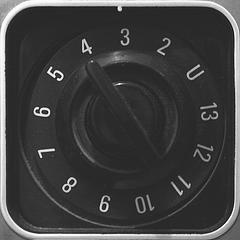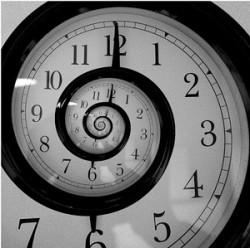
It’s slipping into time out of mind, that knob with 13 positions that lined up with the VHF broadcast television channels. The first time I really understood it, there was only signal available at four of the dial positions. The other channels broadcast a static pattern that was called ‘snow.’ One had the sense that there could be signal coming through these channels and through the extended set of numbers available through the UHF dial as well. The reality was the vast majority of the channels provided only snow. In Sweden, Denmark and Hungary snow is called ‘the war of the ants.’
The channel is a very powerful metaphor. When cable-based replaced over-the-air broadcast as a means of delivering video signal to a television the number of channels carrying signal exploded. The increase in the number of channels fundamentally changed the distribution of programming. Where in the past, three or four channels bore the responsibility for the whole range of human endeavor from news and public affairs to sports, to comedy and drama— now each of these domains could have their own channel. And so we see a sports channel, a news channel, a cooking channel, a movie channel, a comedy channel, etc.
One effect of this expansion mirrors that of professional sports leagues. When a league goes from 12 teams to 24 teams, the talent pool is diluted. Now imagine the quality of play if Major League Baseball were to expand to 500 teams. On the one hand, we might talk about the economics of abundance and how in this new democratized environment, anyone can have a professional baseball team. But there would be a fundamental shift in how we valued viewing baseball games and the importance of baseball in general.
Baseball has a method of dealing with this problem. The teams and players are assigned to leagues, and the leagues roughly approximate levels of talent. League size is collared by the relationship between the availability of talent and the quality of the on-field product. There’s the major leagues, triple A, double A and single A. And then there are the various international leagues. Talent rises within a league until it moves to the next level. Vaudeville worked in the same way, there are many interconnected networks that have this kind of relationship. Economies of talent form within these pools, when talent reaches a certain level it is pulled up to the next level.
The proliferation of cable television channels has changed the value of a channel. When there are 500 channels to choose from, the channel itself ceases to be important. Even with 500 channels, it’s often the case that there’s nothing on. In the early days of cable televsion, 57 channels seemed like a huge number— this may have been the first time that we noticed that even with 57 distinct channels, there was rarely anything worth watching. René Giesbertz takes inspiration from Bruce Springsteen’s song ’57 Channels and Nothin’ On’ to explore what the experience of layering the sound of 57 television channels one on top of the other.
As cable television begins to migrate into the Network, the channel begins to merge into the feed. We move from having too many cable channels to an infinite number of data feeds. The dial is expanded to an infinite number of positions and the cost of broadcasting on one of these channels is minimal. The breakdown into finer and finer categories of broadcasting continues. Bathroom scales broadcast weighing events by user, shoes collect and broadcast running data, Twitter captures and broadcasts a whole range of miscellany. When the cost goes low enough, there’s no reason that everything that can emit state and event data shouldn’t be equipped to broadcast via a unique feed.
Just as the channel is meaningless when there are 500 of them, feeds are meaningless when there’s an infinite number of them. Aggregating data at the feed level doesn’t amount to much in an abundant feed economy. It’s the equivalent of aggregating cable television at the channel level. We don’t watch channels or read feeds, we’re interested in specific items. We surf from item to item, looking for signals along the way to tell us what’s important, what’s valuable. The channel, or feed, encasing the item in a sequence is a low-value clue in a rich information environment. The dial is no longer an adequate navigation interface where we have instant, direct random access to each and every item/program.
While the new metaphor hasn’t come completely into focus yet, the real-time web begins to point the way. There are two primary modes of interaction with items: now and later. We either interact now in real-time, or we defer until a later real-time. The third mode is elimination of an item from the consideration set. Rather than endlessly switching channels, we need an environment rich with signals and pointers to tell us whether or not something is going on. And perhaps even more important, we need to be able to tell when there’s nothing happening. Whether there are 4 channels, 57 channels, 500 channels or an infinite number of channels— it’s still quite possible that, in this real-time moment, there’s nothin’ on.
Comments closed







